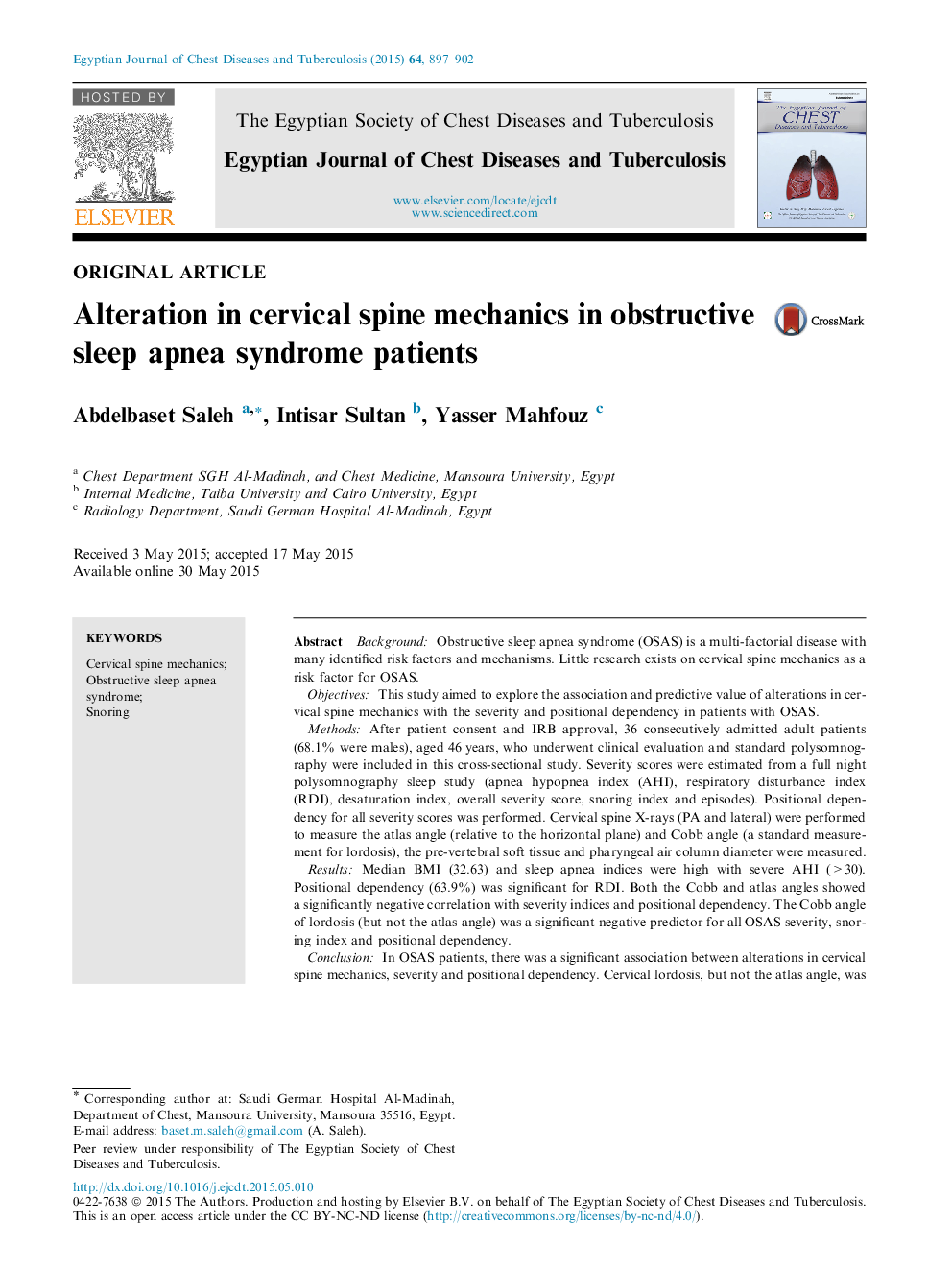| Article ID | Journal | Published Year | Pages | File Type |
|---|---|---|---|---|
| 3399957 | Egyptian Journal of Chest Diseases and Tuberculosis | 2015 | 6 Pages |
BackgroundObstructive sleep apnea syndrome (OSAS) is a multi-factorial disease with many identified risk factors and mechanisms. Little research exists on cervical spine mechanics as a risk factor for OSAS.ObjectivesThis study aimed to explore the association and predictive value of alterations in cervical spine mechanics with the severity and positional dependency in patients with OSAS.MethodsAfter patient consent and IRB approval, 36 consecutively admitted adult patients (68.1% were males), aged 46 years, who underwent clinical evaluation and standard polysomnography were included in this cross-sectional study. Severity scores were estimated from a full night polysomnography sleep study (apnea hypopnea index (AHI), respiratory disturbance index (RDI), desaturation index, overall severity score, snoring index and episodes). Positional dependency for all severity scores was performed. Cervical spine X-rays (PA and lateral) were performed to measure the atlas angle (relative to the horizontal plane) and Cobb angle (a standard measurement for lordosis), the pre-vertebral soft tissue and pharyngeal air column diameter were measured.ResultsMedian BMI (32.63) and sleep apnea indices were high with severe AHI (>30). Positional dependency (63.9%) was significant for RDI. Both the Cobb and atlas angles showed a significantly negative correlation with severity indices and positional dependency. The Cobb angle of lordosis (but not the atlas angle) was a significant negative predictor for all OSAS severity, snoring index and positional dependency.ConclusionIn OSAS patients, there was a significant association between alterations in cervical spine mechanics, severity and positional dependency. Cervical lordosis, but not the atlas angle, was a significant negative predictor of severity and positional dependency. Further studies are needed to validate these results and to study the effect of improving spinal curvature and angular rotation on severity and positional dependency in OSAS patients.
